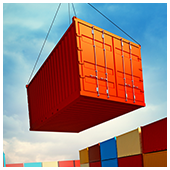 There is a trend toward the use of ‘containers’ as a virtualization strategy within the IT world. And it’s one that seems to be gaining popularity. Virtual containers work in similar fashion to shipping containers, which have made transport of bulky goods uncomplicated and uniform. Every small- and medium-sized business owner needs to learn how containers work before choosing a virtualization solution, and we’ve collected all the necessary details right here.
There is a trend toward the use of ‘containers’ as a virtualization strategy within the IT world. And it’s one that seems to be gaining popularity. Virtual containers work in similar fashion to shipping containers, which have made transport of bulky goods uncomplicated and uniform. Every small- and medium-sized business owner needs to learn how containers work before choosing a virtualization solution, and we’ve collected all the necessary details right here.
Why are containers so popular?
Before the introduction of containers, virtual workstations and servers allowed users to access computing power and software delivered across a local network or the internet. This technology took cloud computing and web hosting a step further than did just software on a website, and it created entire desktop experiences over the internet. However, it is a tad inefficient since running one small application still requires an entire hosted desktop.
Containers guarantee developers that their software will run smoothly, regardless of what type of computer their end user is running.
How containers improve on virtual desktops
Containers operate quite differently because they only package applications and their minimal requirements into a deliverable package. This makes it possible to deliver several containers to several different users with a significantly smaller footprint on the machine hosting the service.
There are a handful of pieces of software that create and deliver containers, and the most popular is Docker. Before the release of Docker, containers had existed for some time, but they were complicated and difficult to manage. With the rise of popularity in virtualization services, software vendors gained significant resources to make friendlier and simpler container solutions.
Although containers have made big improvements in enterprise computing, virtual machines still have a role to play in select circumstances. In both solutions, older equipment can be reappropriated to utilize much bulkier software hosted in the cloud. All you need is an internet connection, and an experienced IT professional to help you set it up. If you’re interested in either virtualization or accessing your applications in a container environment, please contact us today.



